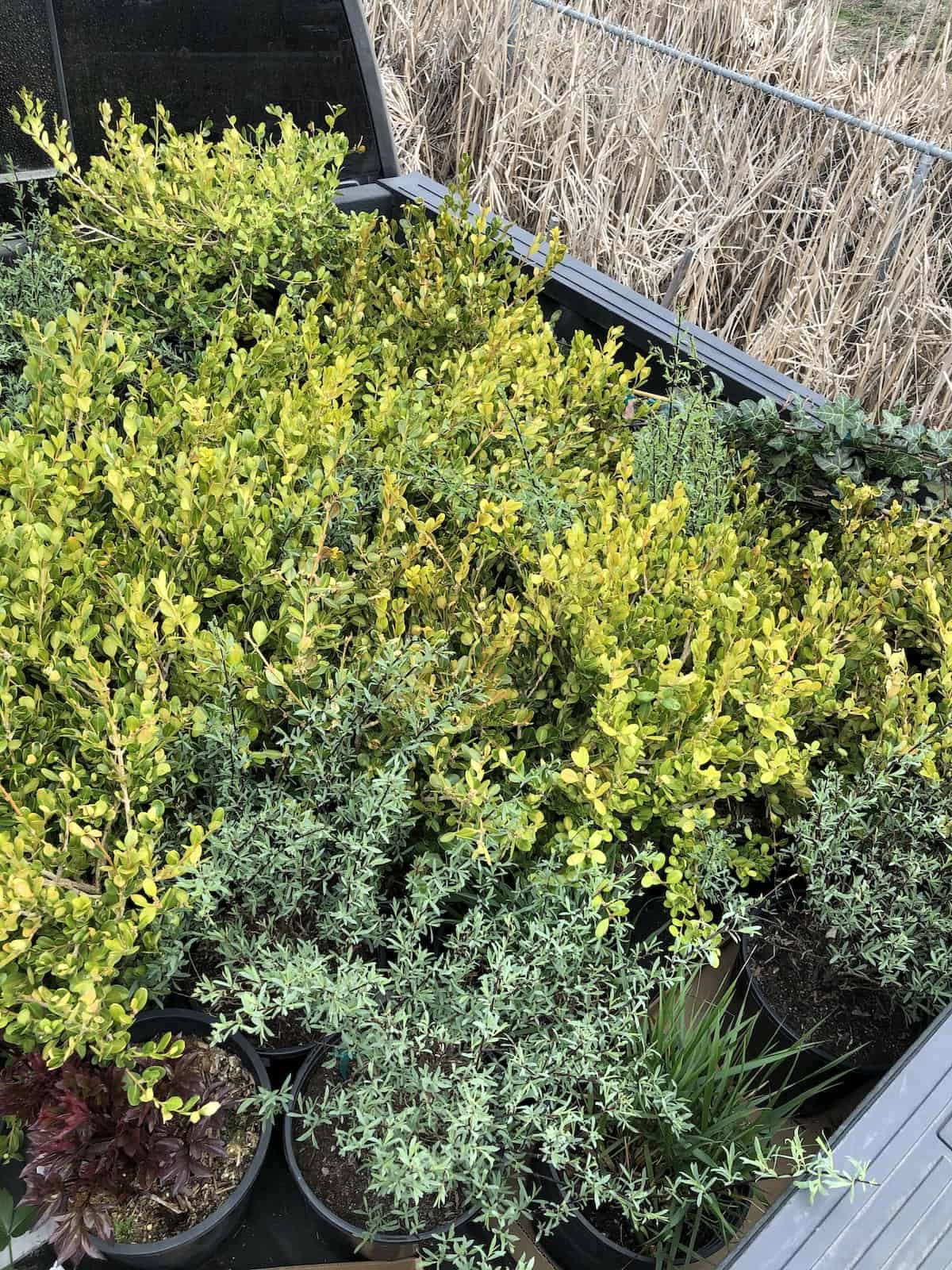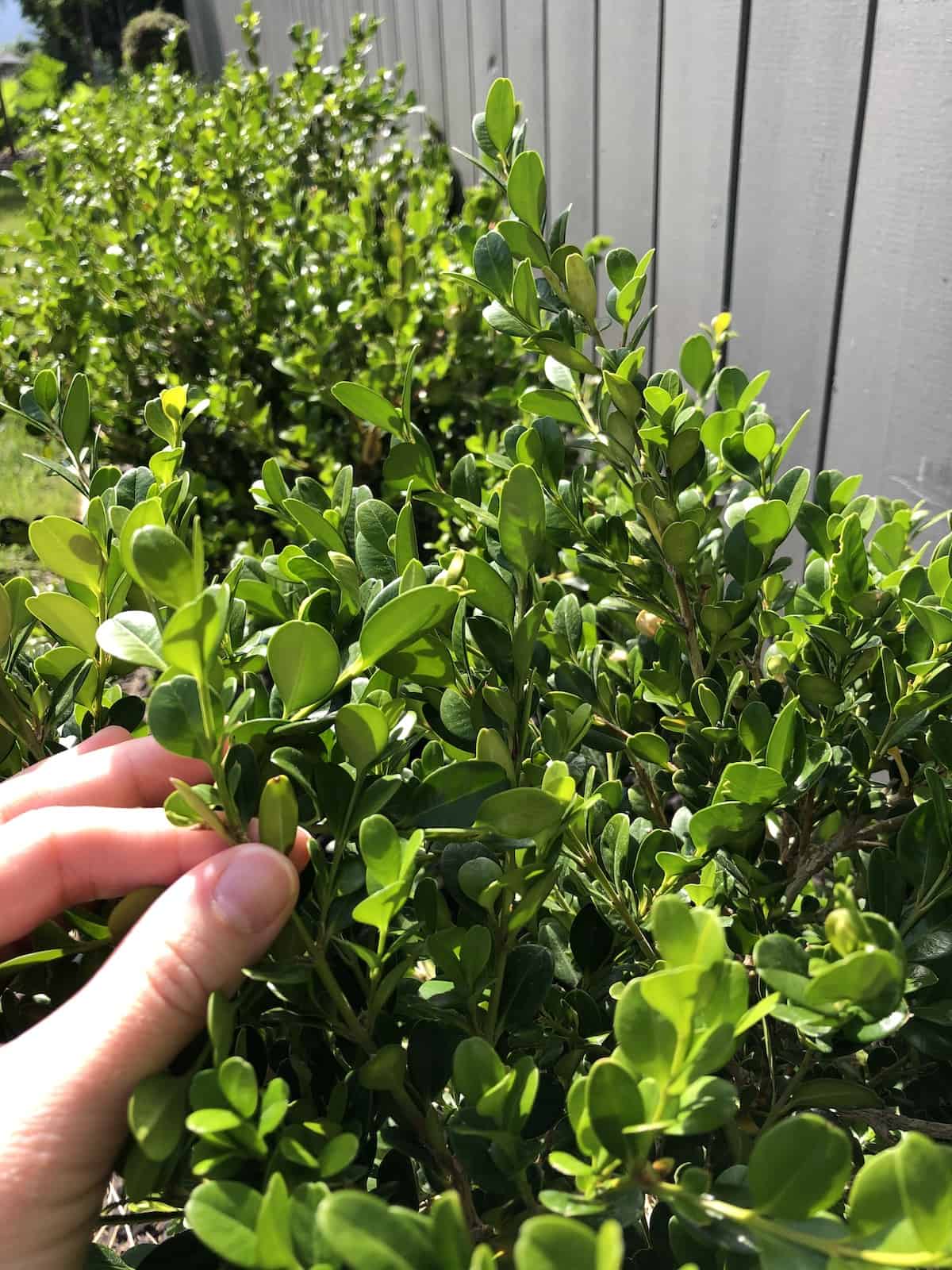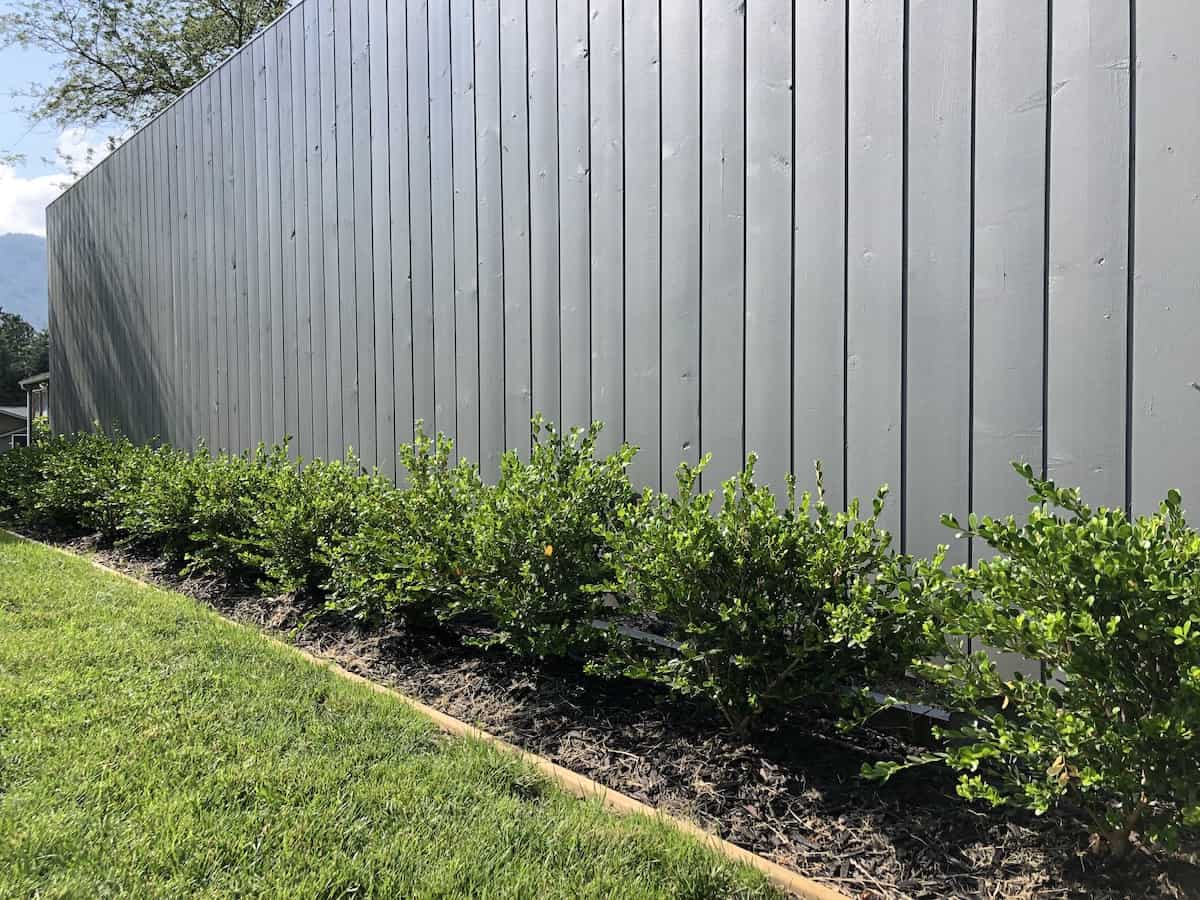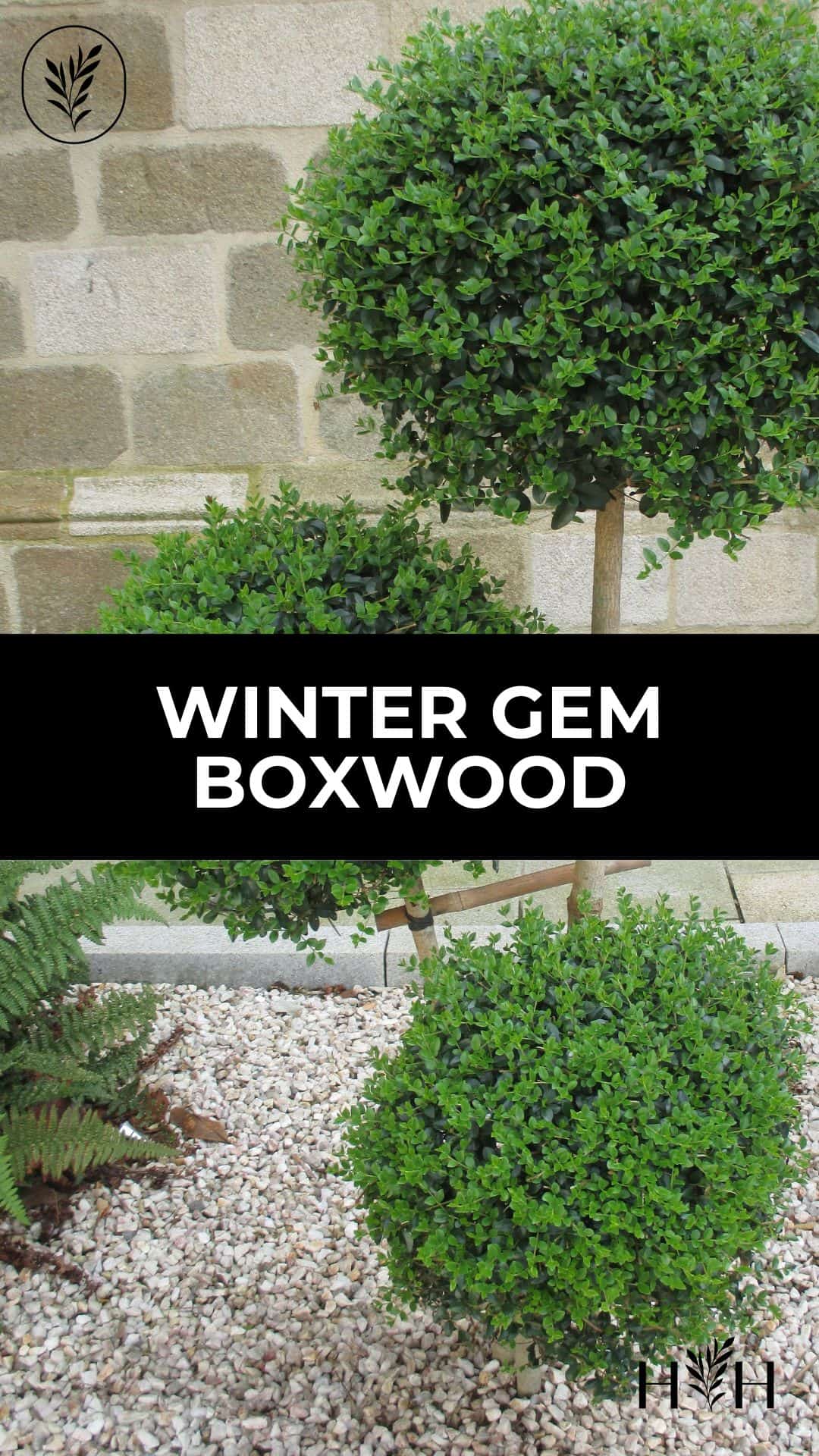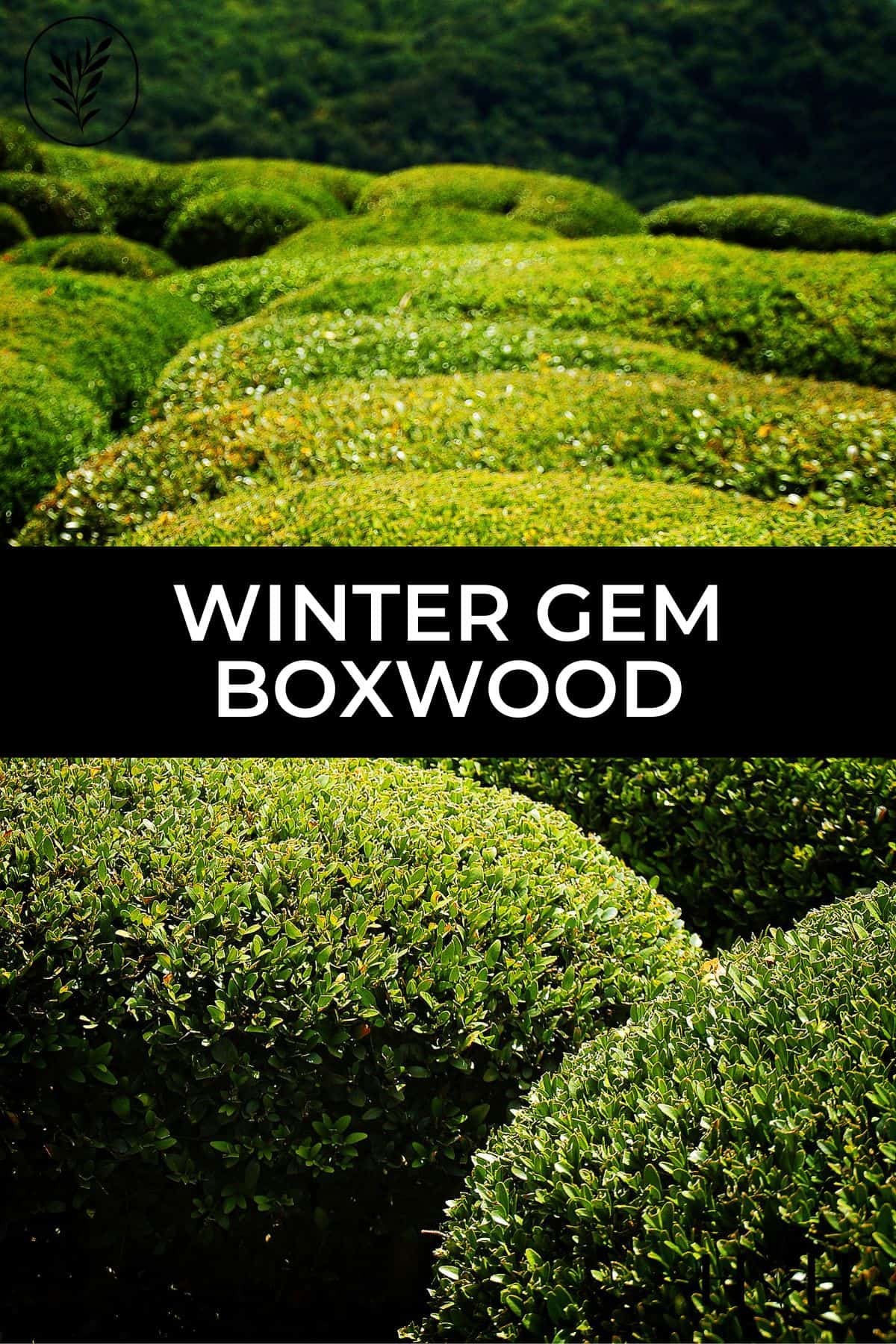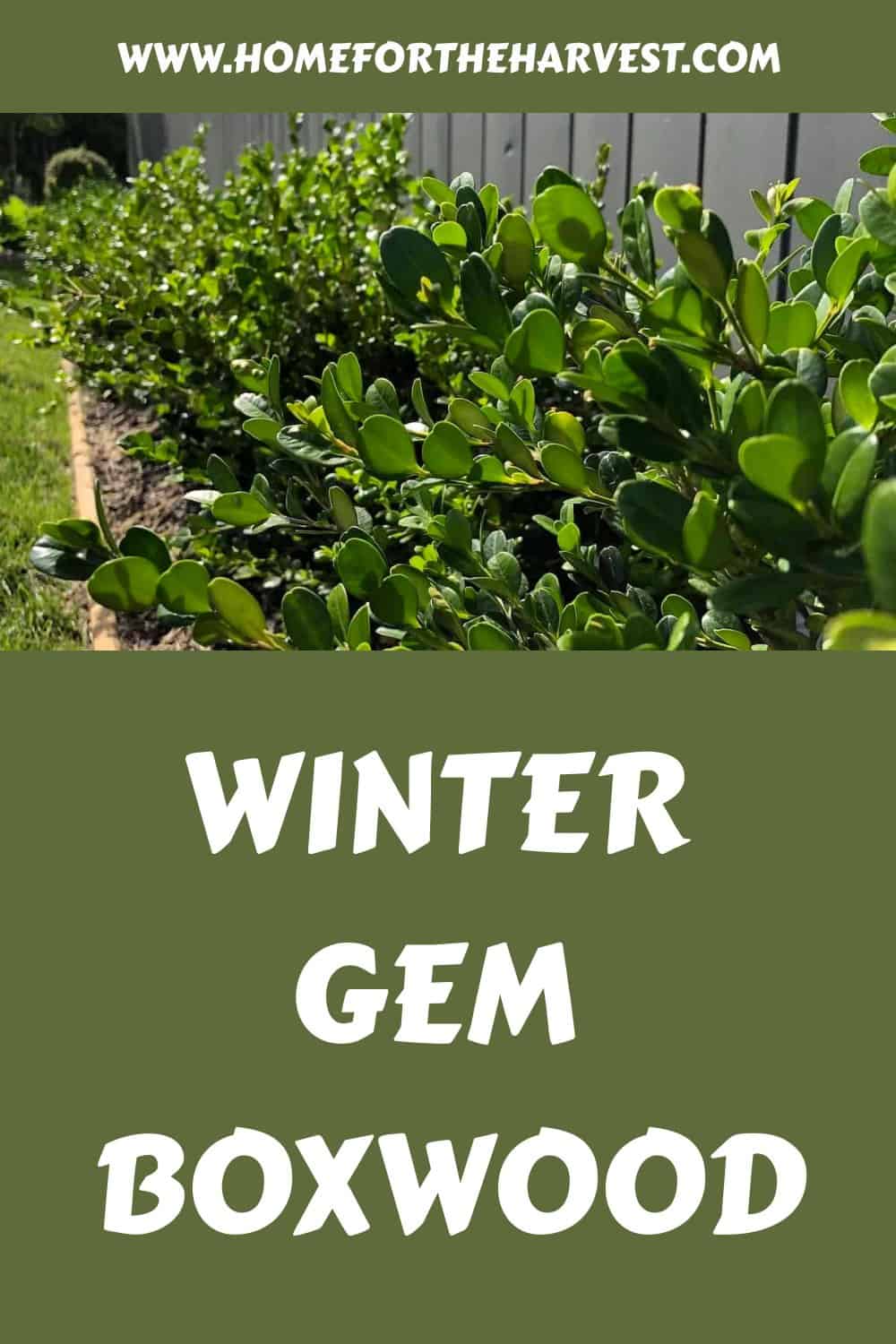‘Winter Gem’ is a cultivar of little leaf boxwood that is particularly hardy to cold-weather conditions. Winter gem boxwood retains its lovely emerald green throughout winter with minimum bronzing, bouncing back to a rich green colour as the snow melts. This evergreen shrub is also deer resistant, drought-tolerant, and easy to maintain.

Winter Gem Boxwood (Buxus ‘Winter Gem’)
Winter Gem Boxwood is a cultivar of little leaf boxwood (Buxus microphylla), native to the eastern coast of Asia (Japan, Korea, Taiwan). Like other boxwood types, these are broad-leaved evergreen shrubs with small, somewhat glossy leaves. Asiatic boxwoods tend to have finer leaves and more of a dwarf form when compared to common boxwood.
Winter gem boxwood is commonly used for landscaping in climates where the winters are too harsh for other types of boxwood to thrive (“Hardy to USDA Zone 4” – Oregon State University). Winter gem, also ‘Asiatic Winter Gem’, has been used in landscaping in North America since at least the 1980s (visit the International Registration List of Cultivated Buxus, The American Boxwood Society).
Finding Winter Gem boxwood in plant nurseries
Winter Gem Boxwood is labeled with several different Latin names by plant nurseries. Here are some of the ways that “Winter Gem” can be labeled:
- Buxus microphylla var. koreana ‘Winter Gem’
- Buxus microphylla var. japonica ‘Winter Gem’
- Buxus sinica var. insularis ‘Winter Gem’
“The New Royal Horticultural Society Dictionary of Gardening (Huxley, 1992), lists three botanical varieties of Buxus microphylla, namely var. insularis, var. koreana (Korean Littleleaf Boxwood) and var. sinica. Others use a different classification, and cultivars that previously were placed under Buxus microphylla var. koreana are now sometimes listed under Buxus microphylla var. japonica or Buxus sinica var. insularis.”
Buxus microphylla var. koreana, Oregon State University, College of Agricultural Sciences – Department of Horticulture
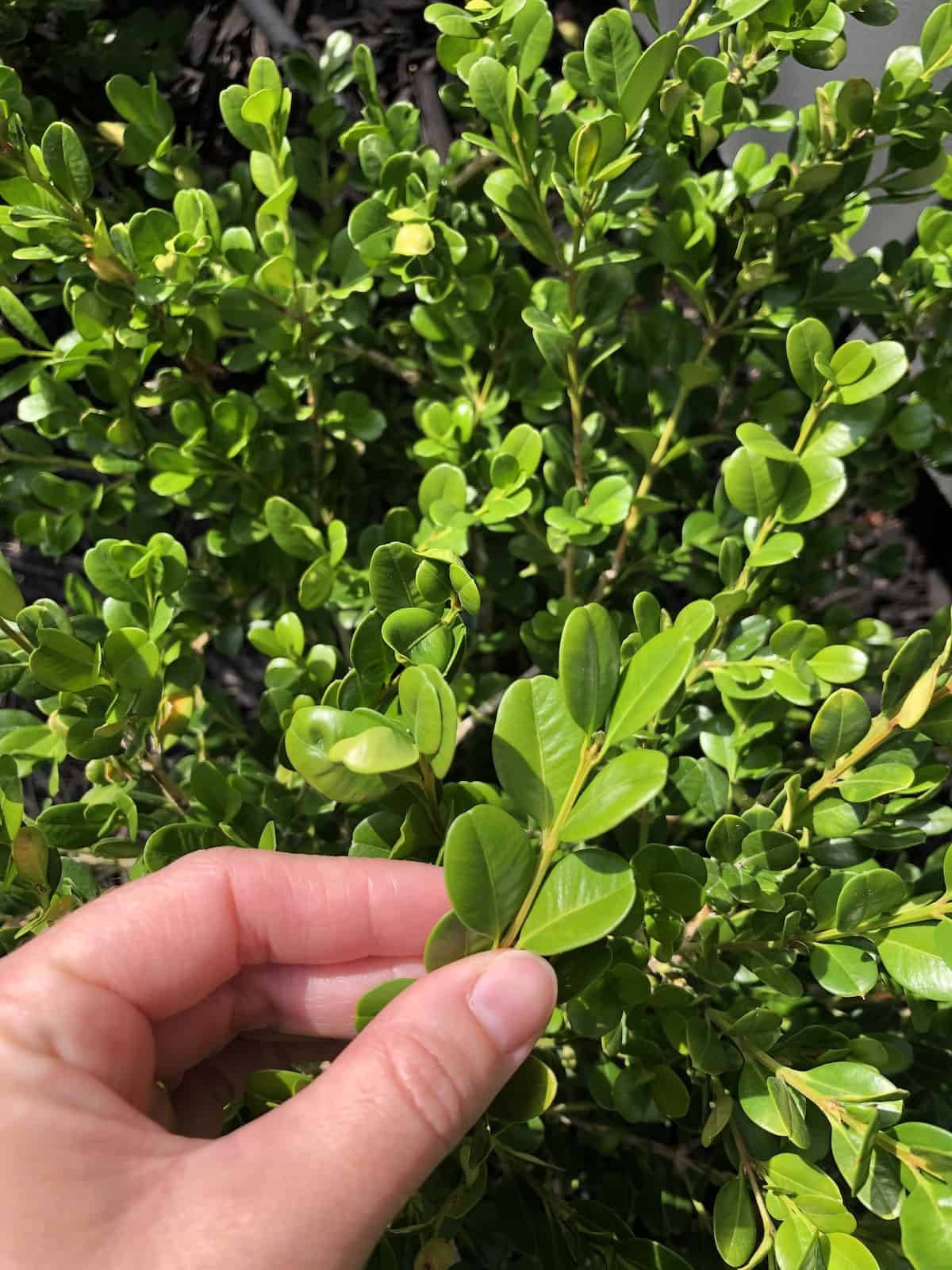
Foliage of Winter Gem boxwood
The foliage of winter gem boxwood is a lovely dark green color for most of the year. In spring and sometimes in late summer, lighter emerald-green tips of new growth appear. The leaves are small ovals and make an excellent addition to floral arrangements throughout the year.
Winter gem boxwood foliage is among the most cold-resistant of little leaf boxwoods. The foliage does yellow to some extent in cold winters, particularly on young or newly-installed plants. This yellowing is called “bronzing”, and is quite common with boxwood. Winter gem is grown in part for its ability to both resist and recover from bronzing. Even golden-bronzed plants of this variety tend to become rich green again by the end of spring (see photo sequence at the end of this article).
“Of course the time to think about safeguarding evergreens from winter damage is in the fall. I have never seen damage on the boxwood cultivar “Winter Gem”. I plant it extensively now. I rarely plant “Green Velvet” anymore, which is the cultivar I have at home.”
A Blast From The Past, Dirt Simple, by Deborah Silver
Winter Gem boxwood in landscaping
Winter gem boxwood is a versatile landscaping shrub used to provide year-round foliage interest and structure to the garden. Here are some common uses for winter gem boxwood in the landscape:
- As a low hedge or shrubby border around an area or structure;
- For edge definition in formal English gardens and potager gardens;
- As a year-round container plant, often trimmed into spheres, cones, or pyramids;
- For ornamental topiary of various shapes;
- For bonsai.

Planting Winter Gem boxwood
Winter gem boxwood shrubs are best planted in early spring or early fall. Plan for a potential size of about 3′ wide by 3′ tall for a winter gem boxwood shrub. In temperate areas with favorable environmental conditions, winter gems can become larger, such as 4′ wide by 4′ tall. Winter gem boxwood can also be kept trimmed to a smaller size between 1.5′-3′ if desired.
Winter gem boxwood can be grown in full sun conditions to partial shade conditions. Its foliage tends to be fuller when grown in sunnier areas, provided the soil is kept moist. A slow grower in general, this plant can increase its growth rate with adequate sunlight and soil moisture (though it can only stand a limited amount of either).
When planted in a row to create a low hedge, Winter Gem boxwood is generally spaced 2′ apart, measured from the center of one plant’s trunk to the center of the next plant’s trunk. Spacing 18″ apart will lead to a thicker hedge more quickly, while spacing 3′ apart is more suited to free-form hedges (rather than formal sheared rows). Particularly small nursery plants can be spaced 1′ apart with proper care and attention.
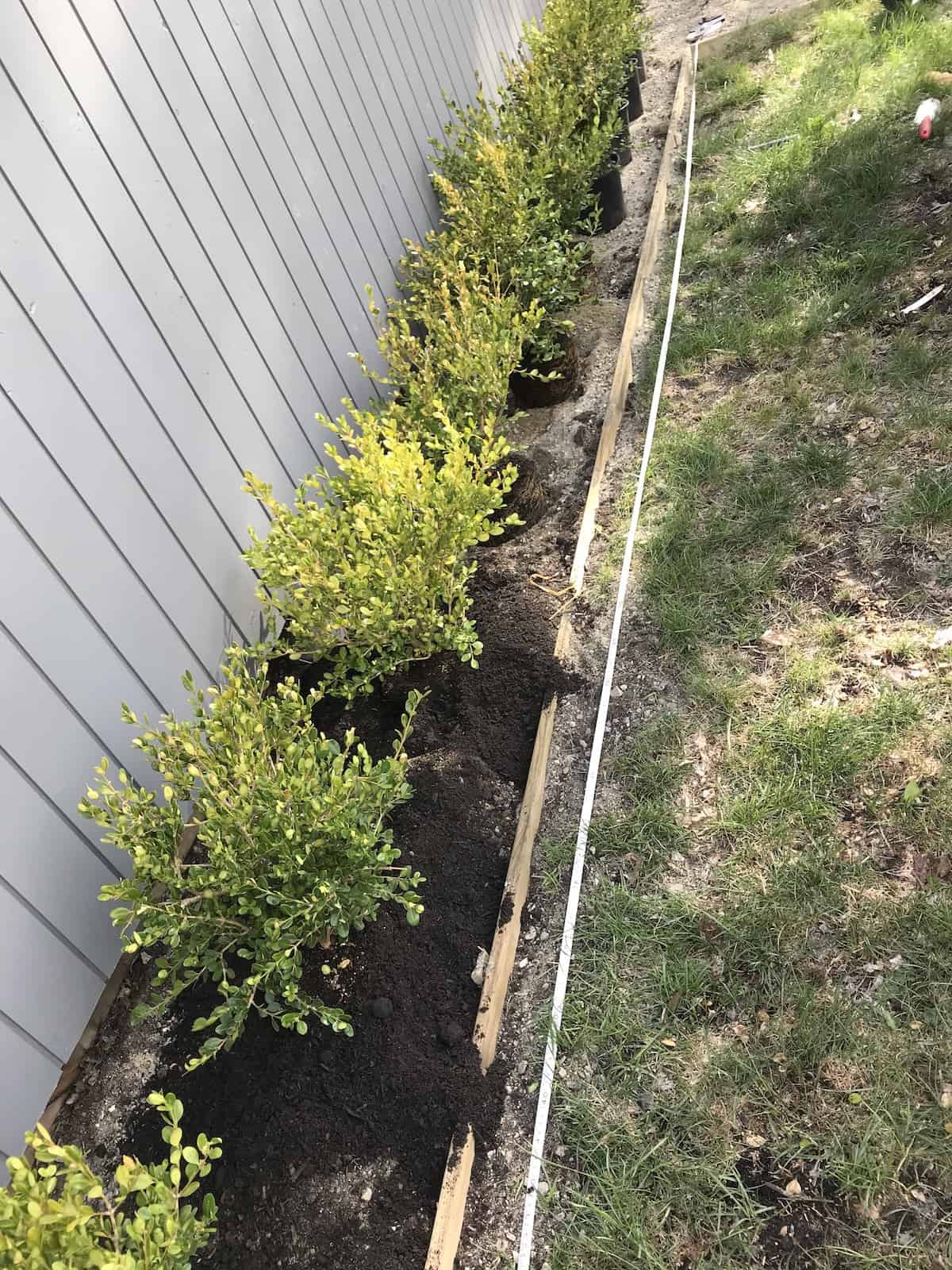
Boxwood plants grow best in moist soil, but do not tolerate wet/muddy soil. Their roots require access to air pockets in the soil just as much as they require access to moisture. A well-placed drip irrigation line and a covering of organic mulch can help keep soil moisture balanced and consistent over time. Re-measure plant spacing prior to mulching to ensure that none of the plants have shifted and settled in their planting hole.
“Boxwood requires only light applications of mulch. Do not apply more than one inch of mulch over the root zone and keep it clear of the main stem. Excessive mulch may encourage vole activity and production of adventitious roots in the mulch layer which are very prone to desiccation (drying) damage. Do not cultivate deeply near boxwoods or their shallow roots will be damaged.”
Boxwood: Identify and Manage Common Problems, University of Maryland Co-operative Extension
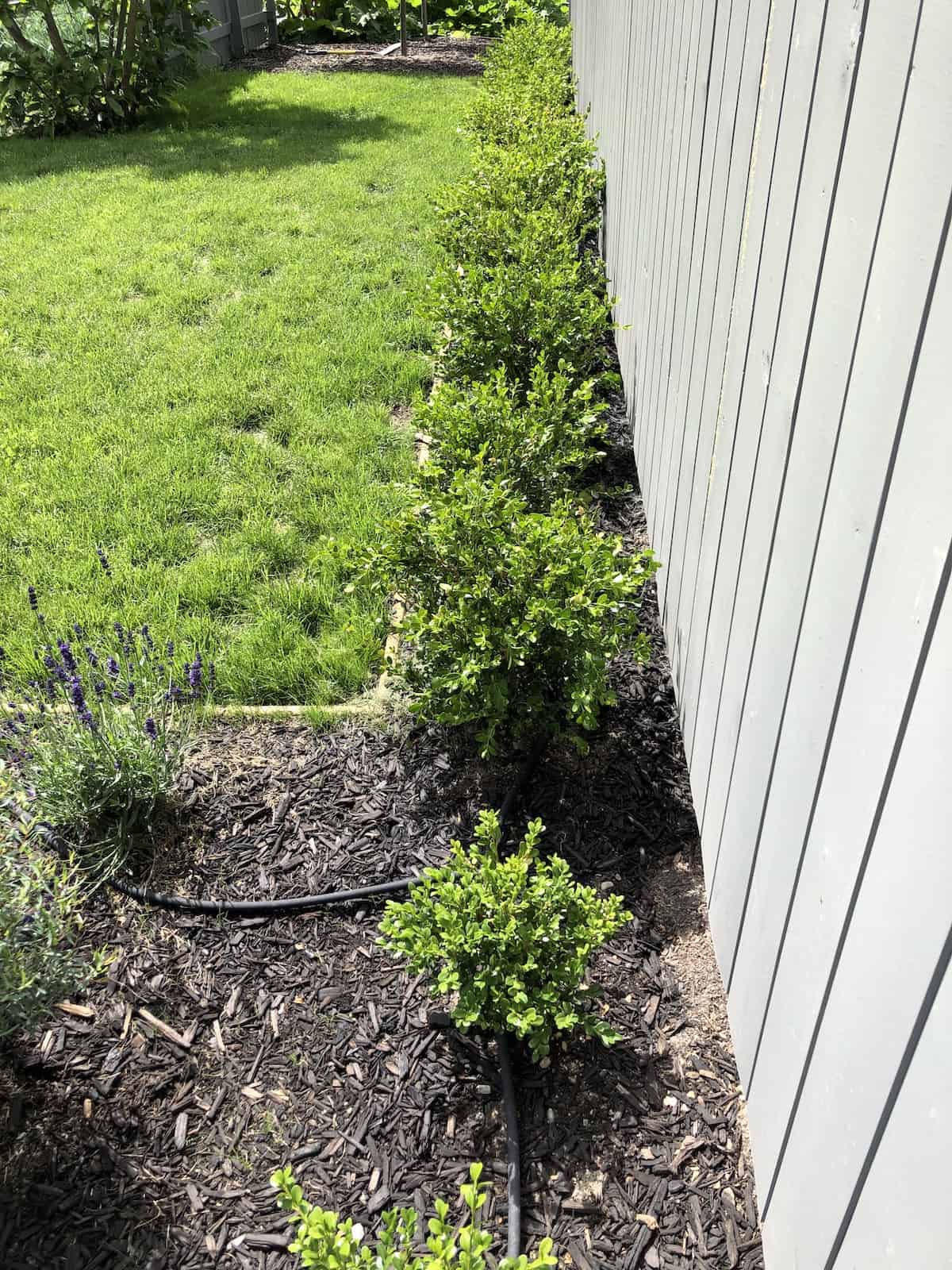
Caring for Winter Gem boxwood plants
For a healthy and flourishing shrub, follow basic care guidelines for evergreen shrubs grown for their year-round foliage.
Boxwood fertilizer for Winter Gem shrubs
Boxwood is low-maintenance shrubs and may not require any fertilizer application in the landscape, particularly if they are mulched with nitrogen-rich organic mulch such as homemade compost. A soil test done by a laboratory can help to advise on fertilizer specifics. The appearance of the plant itself is also somewhat tell-tale (does it look happy and healthy?).
Nitrogen deficiencies seem to be the most common among winter gem boxwood plants in the home landscape. Use a nitrogen-rich natural fertilizer (nitrogen is the first number in the 3-digit NPK fertilizer ratio).
“The earliest symptom of nitrogen deficiency is yellowing of lower leaves. It will have a rather uniform yellowing, that is more pronounced on the older leaves inside the plant. The leaves then become smaller and thinner and turn quite bronze in winter. Boxwood leaves will normally stay on the plant for three years. If they fall off earlier, this may be a symptom of nitrogen deficiency.”
About Boxwood, The American Boxwood Society
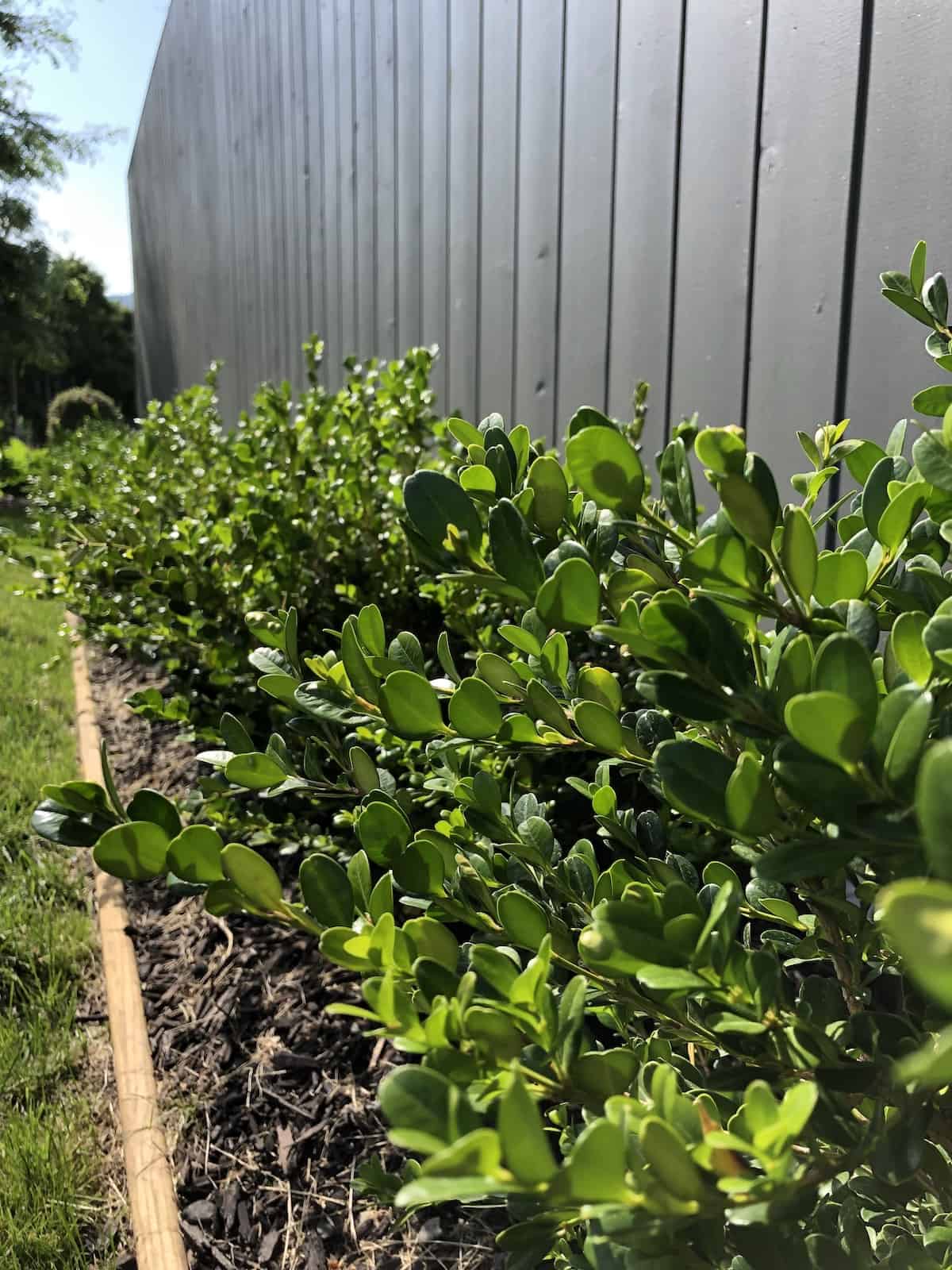
Pruning Winter Gem boxwood
For formal hedges, you will need to prune this evergreen shrub to maintain that neat and tidy look. The best time to prune is in late winter or early spring. When pruning, consider using a line to keep the hedges straight. A secondary pruning may be required in late summer to keep the hedge tidy. Winter gem boxwoods generally do not need “thinning” type pruning.
Pests and disease
Winter gem boxwoods are a relatively disease-resistant cultivar. Diseases like leaf spot and blight do occur, but not as much as in some other cultivars of boxwood. B. microphylla ‘Winter Gem’ is described as moderately tolerant to boxwood blight (see report from Oregon State University). Pests include leafminers, psyllids, and boxwood mites. Observe your plants on a regular basis and keep note of any changes.
